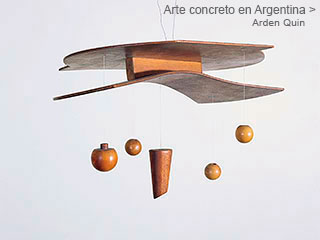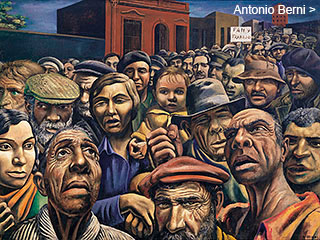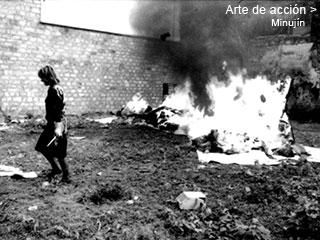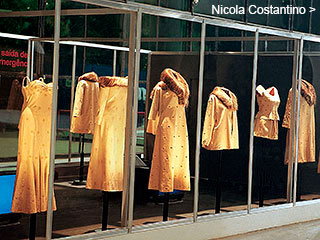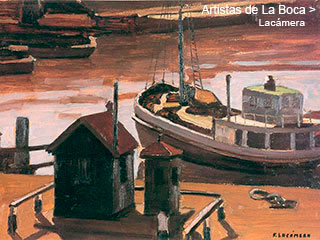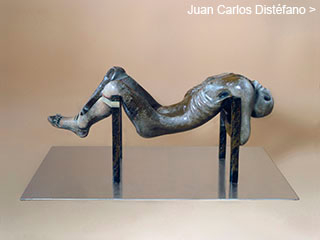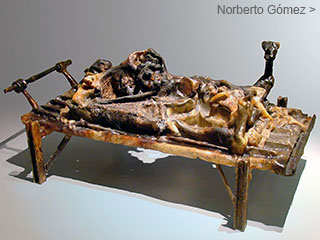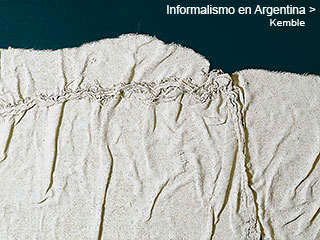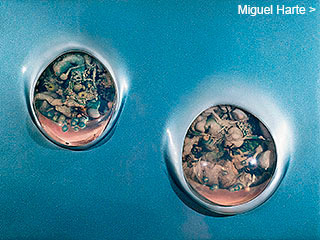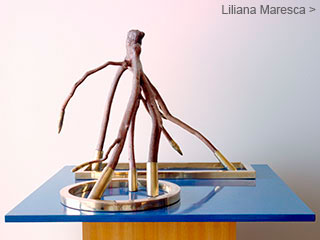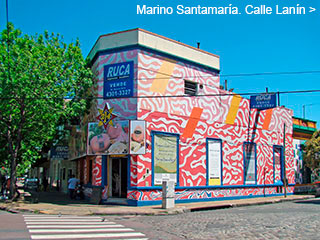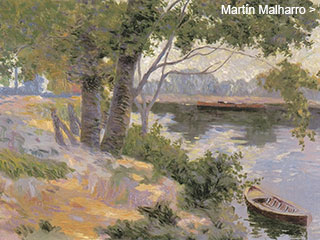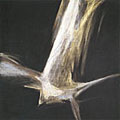Menú
Algunos dossiers
Informalism
in Argentina
in Argentina
by
Jorge López Anaya
August 2003
August 2003
Argentine Informalism incorporated processes which went against the “good taste” of the local practices. Based on the existential poetry of the time, through spontaneous gestures and the use of discarded material, it violated the limits of the traditional artistic genre and opened the road to the concept of the object, the installations and the art of action.
Kemble
paper and metals. All were throw-away or trivial material. The paintings, expressions of “the new materiality”, were made of impastos of little chromatic saturation, with stratifications and curves. He rehearsed several graphic procedures over the matter (spontaneous scratching, dripping and engraved scriptures).
In May 1961, under the name of Suburban Landscapes, he presented a second group of collages at the Pizarro Gallery. Following the style of the previous exhibit, he used zinc plates, tins and other rusted materials. As he expressed in writing, he had “become inspired by the houses constructed with these same elements, so sadly abundant throughout the extension of our country”. The titles of some of these pieces are indicative of their characteristics: Paisaje suburbano (Suburban Landscape) and El rey de los pordioseros (King of beggars). Nevertheless, Kemble evoked the shanty towns without recurring to neorealist painting, such as Antonio Berni in his series Juanito Laguna..
Before the end of 1961, he inaugurated another exhibit at Peuser Gallery, where he took up again the theme of huge black symbols. In this occasion, however, the symbols suggested a biomorphic nature. The backgrounds acted as wrapping and ambiguous spaces. The colors were earth tone, and in some areas you could notice the transparencies obtained by dragging a dry cloth over the dry oil.


